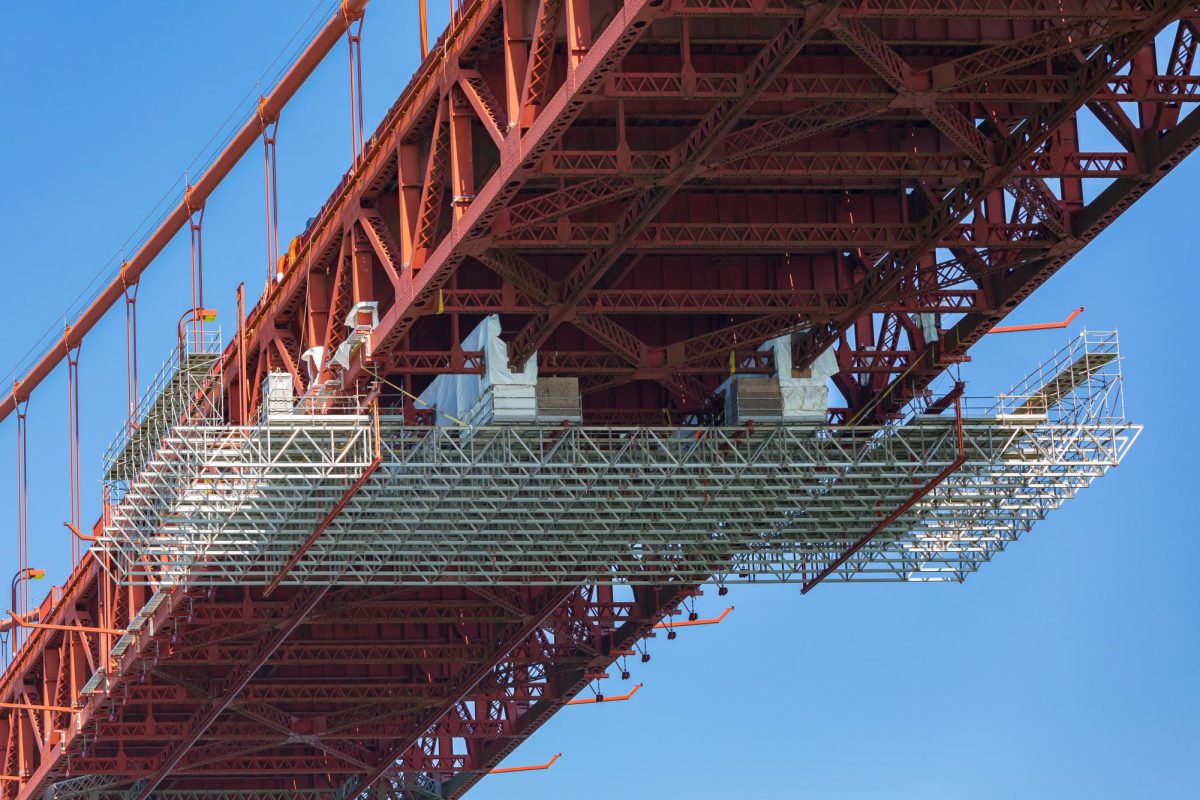The Golden Gate Bridge is considered one of the most sought-after tourist attractions in the San Francisco Bay Area, with over ten million visitors all over the world arriving to admire the massive towers each year. Its rustic structure and flashing red color made it an attractive destination for locals and visitors alike, but many are unaware of the dark history behind the landmark. Up until 2021 alone, over 2,000 suicide attempts from the top of the bridge were reported, with 1,000 of those individuals succeeding in their attempts. This number has been following a steady increase since 2021, inspiring talented architects and designers to find a solution to the problem: developing a stainless steel surrounding the bridge to catch individuals attempting to jump.
After recognizing a serious issue with the number of suicides on the Golden Gate Bridge, San Francisco construction officials constructed blueprints for the net in 2008. The ambitious initiative will request over $400 million in support from California’s funding resources, specifically aiming to construct 20-feet wide stainless steel nets on either side of the bridge and reconstructing the support systems constructed over 50 years prior. Unfortunately, Shimmick Construction Co. and Danny’s Construction Co.– the non-profits who volunteered to take up the project– experienced many contracting and approval delays, setting their plans back by four years. The bridge is estimated to be completed by December of 2023.
Many people have expressed their support for the new construction, including survivors of past suicide attempts. Kevin Hines shared his impactful story on CNN, describing how during the “4 second fall…the feeling of depression left his mind and was replaced by a survival urge he described as almost instinctual.” He later follows up with the statement, describing that toward the end of the fall, “all he wanted was to live.” Hines’ reflection adds to the idea expressed by many San Francisco residents as well as Americans alike: individuals making this serious of a decision deserve the opportunity to rethink their actions. Hines believes that the net will provide the opportunity for individuals to deeply rethink their choices, and choose the path that best suits their emotional state– mirroring the opinions of the 20 other people who survived their falls.
On the other hand, many individuals believe that the massive funding required to construct the net is extremely wasteful and could be better used if redirected to mental health initiatives. Sherrie Paige Guyer, a registered nurse at the University of Virginia School of Nursing, emphasizes that “While money can’t buy happiness, $400 million can buy an awful lot of therapeutic help and crisis intervention for those who need it– particularly given that 85% of those who choose to jump from the Golden Gate live within an hour’s drive of the bridge.” Guyer takes a contrasting perspective, believing that if the state were to redirect funding to mental health facilities, then the number of individuals attempting suicide would decrease automatically– removing the need for such a costly endeavor in the first place.
The non-profit organizations taking charge of the net construction have acknowledged both the positives and negatives of the net’s construction, and eventually decided that the net provides a guarantee that individuals get a choice in their decision-making instead of being forced to face the consequences of something they do not actually want. Hearing the feedback of nurses such as Guyer, San Francisco’s various mental health programs have been working on providing positive messaging and resource hubs scattered across the bridge, allowing other opportunities for individuals considering suicide to rethink their choices. Resource hubs include phone numbers and website information for resources such as therapy and counseling, and the state eventually hopes to expand the resources further in the future.
The steps San Francisco’s officials have taken to ensure the safety of its citizens, as well as their mental status, is a major step to normalizing mental health challenges and addressing them in an actionable way. Even if it has taken over ten years for serious progress to be made, Bay Area residents are looking forward to new implementations within schools and workplaces acknowledging mental health struggles as a whole. Updates on the net’s construction and eventual completion date can be found on the Golden Gate Bridge’s official website for further information.







